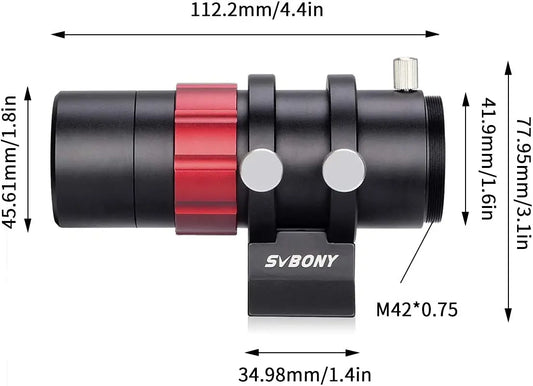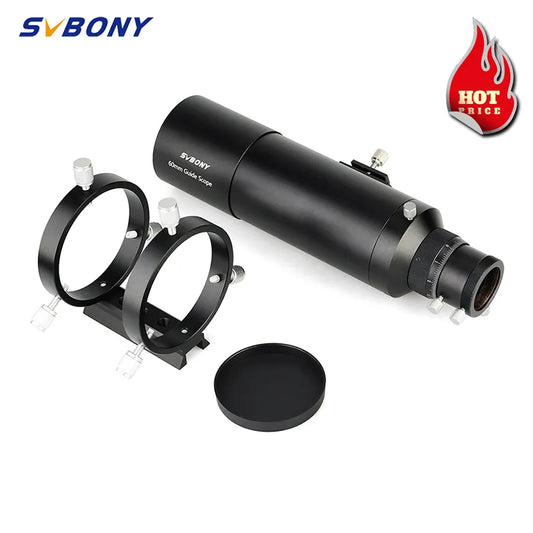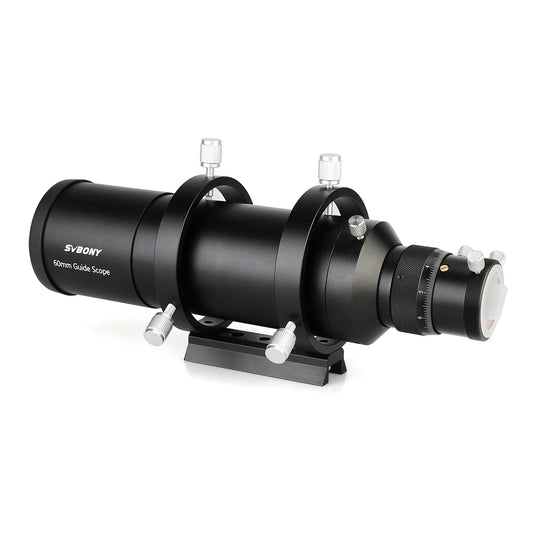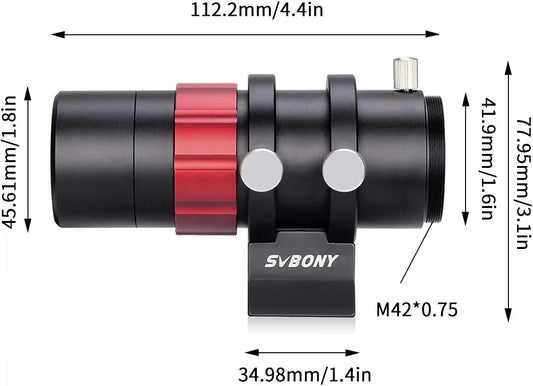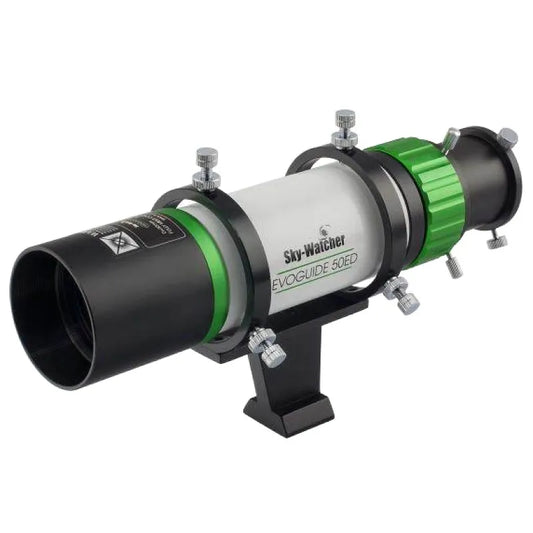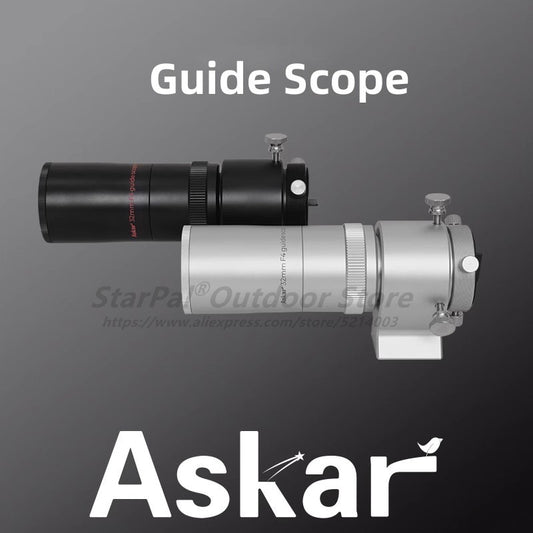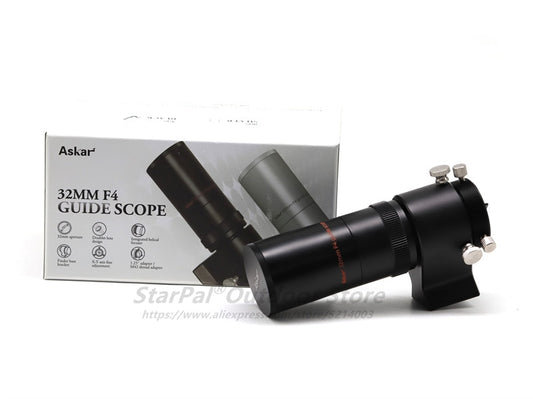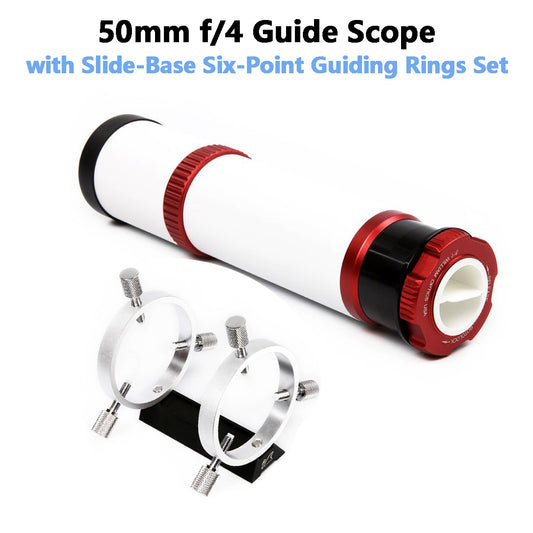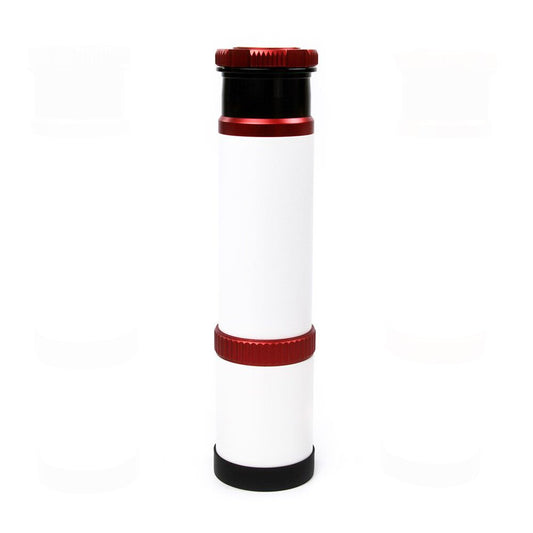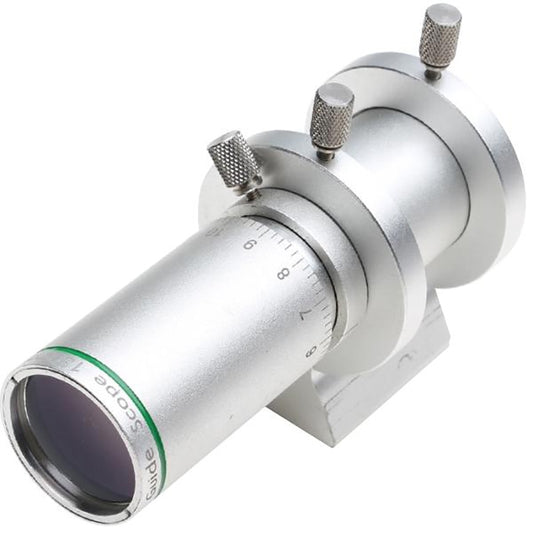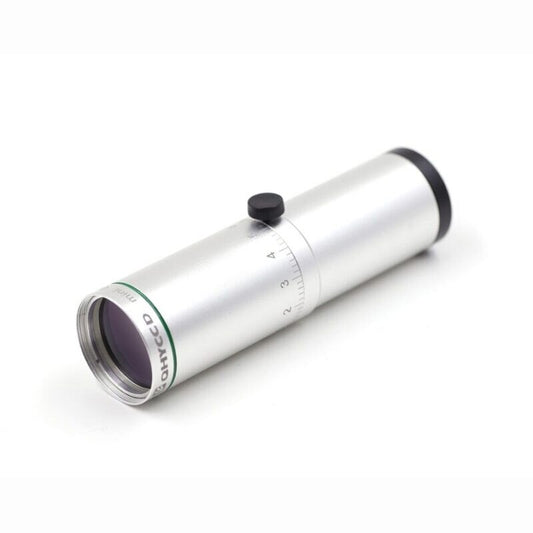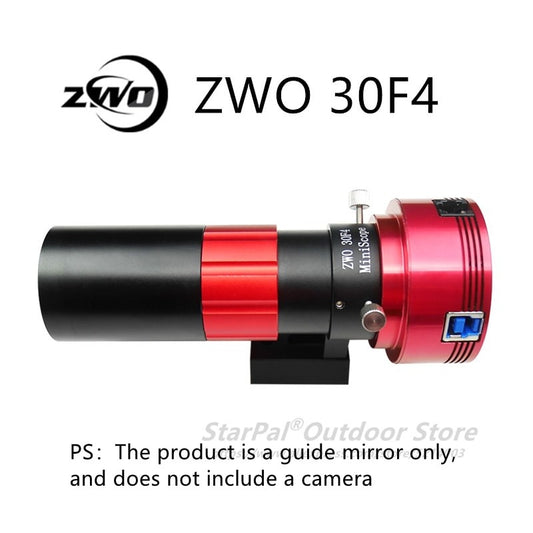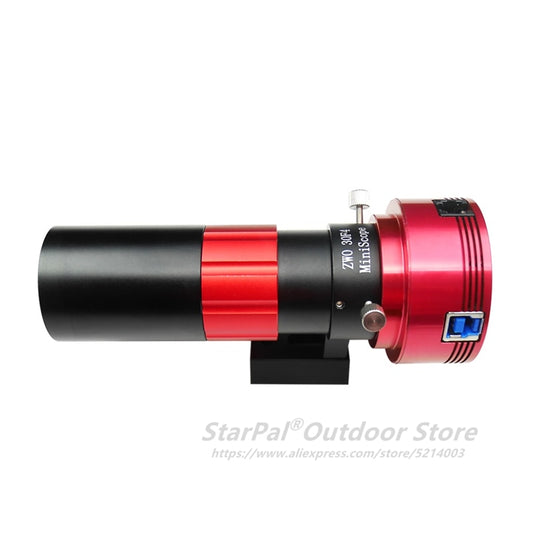Collection: Best Guide Scope for Celestron C8 SCT
Choosing the Best Guide Scope for Celestron C8 SCT: A Comprehensive Guide
If you're an astrophotography enthusiast using a Celestron C8 SCT telescope, you're likely considering adding a guide scope to enhance your imaging experience. To help you make an informed decision, we'll address common questions and insights shared by the astrophotography community on various forums.
Guide Scope Questions and Considerations:
1. Does Guide Scope Make Sense for a 1260mm Focal Length?
The consensus among experienced users suggests that using a guide scope for a 1260mm focal length is viable. Some users recommend a 60mm guide scope, but opinions vary.
2. Factors to Consider When Buying a Guide Scope:
-
Image Scale Relationship: The image scale of the guide scope should ideally be less than 3x the image scale of the main imager, with a maximum of 5x. Calculating image scale involves pixel size and focal length.
-
OAG vs. Guide Scope: While Off-Axis Guiders (OAG) eliminate mirror shift and offer ideal image scale ratios, guide scopes are simpler to use. OAG may have advantages, but it depends on preferences and budget.
3. Accessories for Mounting a Guide Scope on the 8SE:
Considerations for mounting a guide scope include minimizing mirror shift and differential flexure. Some users recommend a top dovetail secured in at least two places to achieve better stability.
Community Insights:
- User Experiences:
-
60mm Guide Scope: Some users find success with a 60mm guide scope but note occasional challenges, especially with the 8SE without a reducer.
-
OAG Benefits: Off-Axis Guiders can aid in polar alignment using Sharp Cap and eliminate mirror shift, providing a near-ideal image scale ratio.
- Pixel Sizes and Compatibility:
-
Pixel Size Comparison: Pixel size plays a crucial role in guide scope selection. If the imaging camera's pixel size is significantly larger than the guide camera's, it may impact performance.
- Recommendations for Similar Setups:
-
ED80 and ZWO ASI120mm: Users report decent results with this combination, especially when using a f/6.3 focal reducer.
-
Celestron AVX Mount: A combination of ZWO 30mm guide scope and ZWO ASI120mm-S guide camera is reported as effective.
Recommendations for C8 Imaging:
-
Focal Reducer: Many users recommend shooting in a reduced configuration, with a f/6.3 focal reducer, providing better results for deep-sky imaging.
-
Orion ST80: The Orion Short Tube 80mm (ST80) is popular for guiding, providing a good balance of performance and ease of use.
Considerations for Challenging Setups:
-
Long Focal Length Challenges: Users caution about the challenges of imaging at 2000mm focal length, especially on mounts like AVX. Recommendations include shorter focal lengths for easier imaging.
Additional Tips and Troubleshooting:
- Focus Challenges:
-
Verification Techniques: Users suggest verifying focus by slewing slowly in RA back and forth until the guide camera catches a bright star. This can help ensure that your system is in focus.
- Plate Solving for Guide Stars:
-
Plate Solving Technique: Some users recommend using plate solving to locate guide stars, especially with Off-Axis Guiders. Software like TheSkyX allows users to set up a field of view indicator for both the main and guide cameras.
- Mount Limitations:
-
Mount Considerations: The choice of guide scope also depends on the capability of your mount. If your mount is not designed for high focal lengths, consider shorter focal lengths or explore upgrading to a more robust mount.
- Community Collaboration:
-
Forums and Communities: Engage with astrophotography forums and communities to seek advice, share experiences, and learn from others who have similar setups. The astrophotography community is known for its willingness to help and share valuable insights.
Troubleshooting Common Issues and Further Recommendations:
- Addressing Difficulties with OAG:
-
Finding Guide Stars: Users experiencing challenges with OAG in locating guide stars on moonless nights may benefit from utilizing plate-solving techniques. Some planetarium software allows you to set up a field of view indicator to facilitate guide star identification.
- Mount Upgrade Considerations:
-
CG-5 Limitations: If you find imaging at 2000mm focal length challenging on your CG-5 mount, consider exploring the possibility of mount upgrades. Upgrading to a more robust mount can significantly improve tracking accuracy and overall imaging performance.
- Guiding with a Separate Guide Scope:
-
ST80 for Guide Scoping: The Orion Short Tube 80mm (ST80) continues to be a popular choice for guide scoping, offering a good balance between simplicity and effectiveness. Users appreciate its ease of use and ability to find guide stars reliably.
- Challenges of Long Focal Lengths:
-
Optimal Focal Length for DSOs: Acknowledge the challenges associated with long focal lengths for deep-sky object (DSO) imaging. Consider shorter focal lengths for a more forgiving imaging experience, especially when starting your journey into deep-sky astrophotography.
- Adapting to Your Unique Setup:
-
Individual Equipment Considerations: Every astrophotographer's setup is unique, and what works well for one user might require adjustments for another. Be open to experimentation and adaptation based on your specific telescope, mount, and camera configuration.
Embracing the Learning Curve:
Astrophotography is a continuous learning experience, and overcoming challenges is an integral part of the journey. As you navigate the complexities of guide scopes, focal lengths, and mount compatibility, remember that each piece of advice contributes to your knowledge base.
Conclusion:
In conclusion, the choice of the best guide scope for your Celestron C8 SCT depends on your specific preferences, budget, and imaging goals. While some users find success with 60mm guide scopes, others prefer the stability and advantages of Off-Axis Guiders. Experimentation and careful consideration of pixel sizes and image scales are crucial to achieving optimal guiding performance.
Remember, astrophotography is a journey of exploration, and recommendations may vary based on individual experiences. Feel free to experiment, listen to advice, and enjoy the process of capturing the wonders of the night sky with your Celestron C8 SCT.


